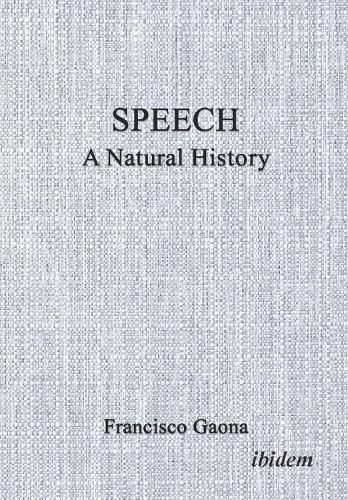Readings Newsletter
Become a Readings Member to make your shopping experience even easier.
Sign in or sign up for free!
You’re not far away from qualifying for FREE standard shipping within Australia
You’ve qualified for FREE standard shipping within Australia
The cart is loading…






Speech is the exchange of information for mutual social orientation. The fundamental features of speech are simplicity of elementary structure and universal referential application.
Francisco Gaona traces the evolution of the signal calls of anthropoid apes and early hominids to the vocalized phonic utterances of speech by the isomeric reordering of the signal call's frequency components. Determining the source of its vocalic and consonantal part elements and of the syllable as their integrational framework is essential to understanding the origin of speech.
Vowels were first isolated during the ritualized practice of collective tonal vocalization as effectively consistent carriers of referential sound, with proto-consonantal oral noises excluded as interruptive noise. The syllabic wave emerges at the utterance of a vocal tonal element (a vowel or vowel equivalent). Rather than preceding, the syllable follows as a result of the sounding of the vowel. Subsequently, the previously excluded noises, together with the vowel elements, would be incorporated into the cohering acoustic wave-energy field of the syllable. The syllable as an ordered set of phonic elements is revealed as the fundamental combinatory and permutational structure generative of lexical items: the foundational basis of the development of speech.
Gaona's study pays special attention to:
the semiotic and cognitive importance of the ritual display performance,
in tracking, hominids first learned the significance and use of signs, an essential precursor of speech,
the regulated collective pace as the source of the sustaining rhythmical progression in the dance, music, and the prosody of speech,
the interval and intervallic subdivision of the collective pace as the origin of the choreography of movement, scalar melodic composition, and the prosodic intermittence of speech.
$9.00 standard shipping within Australia
FREE standard shipping within Australia for orders over $100.00
Express & International shipping calculated at checkout
Speech is the exchange of information for mutual social orientation. The fundamental features of speech are simplicity of elementary structure and universal referential application.
Francisco Gaona traces the evolution of the signal calls of anthropoid apes and early hominids to the vocalized phonic utterances of speech by the isomeric reordering of the signal call's frequency components. Determining the source of its vocalic and consonantal part elements and of the syllable as their integrational framework is essential to understanding the origin of speech.
Vowels were first isolated during the ritualized practice of collective tonal vocalization as effectively consistent carriers of referential sound, with proto-consonantal oral noises excluded as interruptive noise. The syllabic wave emerges at the utterance of a vocal tonal element (a vowel or vowel equivalent). Rather than preceding, the syllable follows as a result of the sounding of the vowel. Subsequently, the previously excluded noises, together with the vowel elements, would be incorporated into the cohering acoustic wave-energy field of the syllable. The syllable as an ordered set of phonic elements is revealed as the fundamental combinatory and permutational structure generative of lexical items: the foundational basis of the development of speech.
Gaona's study pays special attention to:
the semiotic and cognitive importance of the ritual display performance,
in tracking, hominids first learned the significance and use of signs, an essential precursor of speech,
the regulated collective pace as the source of the sustaining rhythmical progression in the dance, music, and the prosody of speech,
the interval and intervallic subdivision of the collective pace as the origin of the choreography of movement, scalar melodic composition, and the prosodic intermittence of speech.